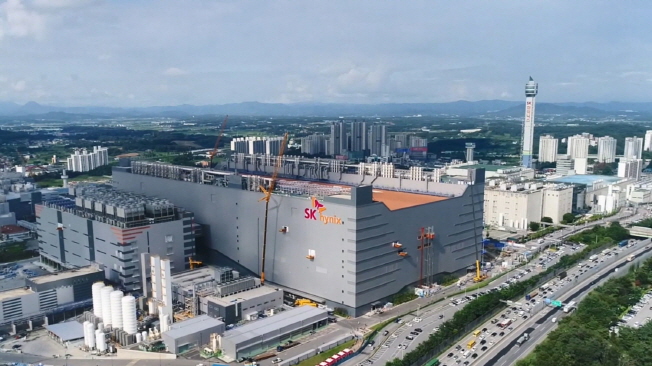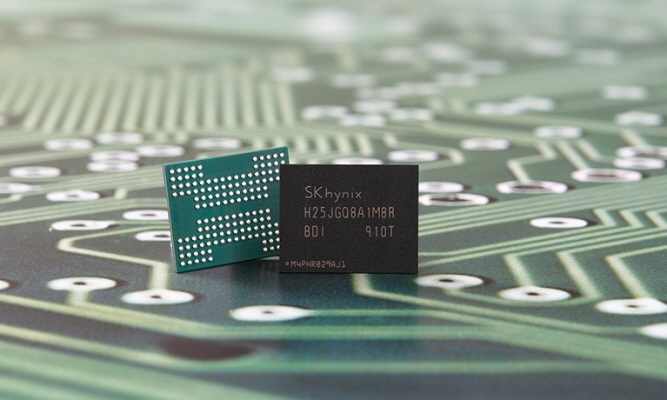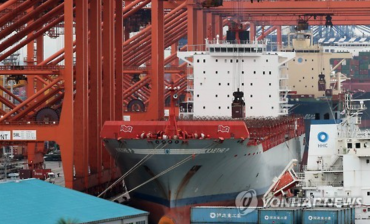SEOUL, Jul. 25 (Korea Bizwire) — SK hynix Inc. on Thursday reported dismal second-quarter earnings on lower memory chip prices, saying it will cut output to respond to challenging market conditions and uncertainties from trade disputes between South Korea and Japan.
Net profit for the world’s No. 2 memory chip maker came to 537 billion won (US$455.8 billion) in the April-June period, plunging 88 percent from a year earlier, the company said in a regulatory filing.
Its sales dipped 38 percent on-year to 6.5 trillion won, and operating profit plummeted 89 percent to 637.6 trillion won, it said.
Operating profit was the lowest in three years, far below the market consensus of 744.1 billion won, compiled by Yonhap Infomax, the financial arm of Yonhap News.
SK hynix said its dismal earnings were due to weaker-than-expected demand recovery and a steep fall in memory prices amid trade tension between the United States and China.
Shipments of DRAM, used for temporary data storage in PCs and servers, increased 13 percent in the second quarter from a quarter earlier, but the average selling price fell 24 percent over the period, the company said.
For NAND flash memory, mainly used for mobile devices, shipments increased by 40 percent on-quarter thanks to demand recovery, but the average selling price decreased by 25 percent.
The chipmaker said it will cut output of major memory products and focus on high-density products to improve profitability.
“SK hynix plans to adjust production and investment flexibly to respond to the market conditions,” the company said in a release.
The company said it will cut its DRAM production capacity starting in the fourth quarter and will convert part of its DRAM fab line in Icheon, east of Seoul, to CMOS image sensor (CIS) lines in the second half to foster new growth drivers.
SK hynix also plans to trim the NAND wafer input by more than 15 percent this year, up from its earlier plan to decrease it by 10 percent.
The company said it will review the timing of the expansion of its two fab lines in South Korea, expecting next year’s capital expenditures will be “significantly lower” than this year.
The latest decision also comes as the South Korean tech firm faces rising uncertainties on the trade front. Japan began adopting stricter export rules on some key materials needed for making chips on July 4 amid a diplomatic row over the issue of wartime forced labor.
Although the measure hasn’t affected production so far, SK hynix said it is preparing for Japan’s decision to remove South Korea from a list of trusted buyers, which would affect a broader range of high-tech materials.
“The company has secured as much stockpiles as it can of some materials (imported from Japan), while diversifying vendors and minimizing their input required in production,” Cha Jin-Seok, the chief financial officer of SK hynix, said in a conference call.
“If (the Japanese export restrictions) are prolonged, we cannot rule out the possibility of the move causing the disruption in production. We will keep a close eye on the situation to take appropriate measures.”
SK hynix CEO Lee Seok-hee visited Japan earlier this week to meet Japanese partners to discuss how to source the restricted materials and discuss countermeasures against Tokyo’s expansion of export curbs in Seoul.
In the short term, the Japanese export curbs were a boon for SK hynix’s shares, which rose 10 percent this month on the back of foreign buying.
Clients increased purchases of memory chips and analysts speculated that major chip makers may reduce output, which drove up chip prices.
In the two weeks following Japan’s imposition of export curbs on South Korea, spot prices of major DRAM products and NAND flash memory chips rose 25 percent and 6.1 percent, respectively, according to data from the global market researcher DRAMeXchange.
SK hynix said it anticipated the high inventory level of memory chips to return to normal by the end of this year, helped by demand recovery and output cuts by major suppliers.
“Concerns over a NAND supply glut will rapidly ease in the third quarter, and the inventory level and prices will continue to stabilize in the fourth quarter,” Cha said.
In regard to the recent hike in DRAM spot prices, SK hynix said it was not sure whether the short-term trend will hold on but expected stockpiles will continue to go lower on rising demand by clients later this year.
SK hynix rose 2.45 percent to 79,200 won on the Seoul bourse, versus the benchmark KOSPI’s 0.38 percent fall.
(Yonhap)








